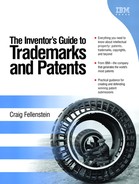Management of Innovation
The existence of prior art can be a good problem to have. Inventors must openly disclose any prior art they are aware of when they submit inventions. Having prior inventions in areas that are close to your ideas is a good for reasons of endorsement and validation of your idea, but (as we previously mentioned) inventors must now be able to strengthen their idea beyond the prior art. Find ways that your idea is truly unique from the prior art and explain this in writing. State the identification of the prior art; the differences your idea expresses from that of the prior art. This will be extremely helpful towards validating your idea.
Ensure there is a problem you are trying to solve with your idea and that it is the problem you started out trying to solve. Make sure that your solution has significance towards resolving the problem you have identified. At this juncture, you can (in some ways) determine the high/low-value aspects of the new idea and maybe even speculate on the value as it might pertain to justifying a business reason for the idea. A high-value idea would be one that applies to many, and many would be interested in your solution. Sometimes, high-value ideas have associated with them more increased legal expenses, and in fact, sometimes budgets for defending these ideas are set aside, early-on in corporations.
In contrast to the high-value idea is the low-value idea. A low-value idea, of course, has less of a payback than a high-value idea, but nonetheless has a unique value.
Patents are thought of as intellectual property assets, which are (in fact) almost always commercialized with a monetary value. These commercialized assets can now be purchased, exchanged, or traded in complex business negotiations. Patents also can be established to block someone else from gaining a patent on an idea in a specific area. These are referred to as blocking patents.
Innovation can be managed in many ways, depending on the strategy and goal. Project where the technology is going in the area(s) of your invention idea and be prepared to discuss where in that continuum your invention idea lies. Understand that it takes (in some cases) years to process a patent submission, so ensure your idea has a “shelf-life” of more than two to three years. Finally, if you want to become an avid inventor, work to establish many inventions across a wide area of interests. Keep a portfolio of your ideas, as one idea may one day lead to another.
Be able to describe your innovation in forms of process flow diagrams, presenting a step-wise discussion of how the novelty occurs in the solution. And finally, consider the problem statement to be absolutely critical. As we mentioned, every invention has to solve a problem, and inventors need to be crystal clear on the problem their invention solves and why it is unique from everything else considered by experts in the field.
The next chapter explores specific “search” strategies to help inventors determine what has and has not been submitted as inventions in the past. Creating inventions that embellish prior art from openly-disclosed pieces of intellectual capital, has to be done in the proper manner. Identifying this information is the first step in this process. We will show you specific research tips on how to construct the most powerful search (syntax) keyword combinations. We will also show you Web sites to execute these types of searches and how to document the results of this important research.
The strategies you choose to use for researching and formulating your invention and comparing it to prior art are very important, as we will explain in the next chapter. We will conclude the following chapter with a fascinating experiment in creating a real invention, searching for prior art, and strengthening to get around some prior art, in order to finally create a new a unique invention. Sit back, relax, and enjoy this next very unique approach to describing how to create a patent.
